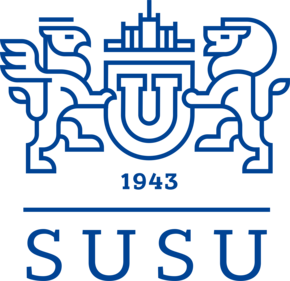The final round of the “2025 Science Days in the Chelyabinsk Region” took place at Nosov Magnitogorsk State Technical University on October 24th. The main event of the day was the conference on the “Development of Applied Science in the Region”.
The stated goal of the conference is to create conditions for scientific and technological innovation in Chelyabinsk in line with the national goal of establishing Russia’s technological leadership. Today, priority areas in the South Ural region include: new materials, energy, ecology, medicine, nuclear technology, transportation, and aerospace engineering.
When opening the conference, the Head of the Ural Territorial Administration of the Ministry of Science and Higher Education of the Russian Federation Igor Manzhurov reviewed the scientific achievements by all Ural universities and enterprises, and specifically highlighted the excellent work of SUSU: the work by its research and education centres and the “Heart of the Urals” Advanced Engineering School.
Leading scientists of South Ural State University presented reports on recent developments at the conference. Representatives of the university’s industrial partners also attended the meeting, giving positive feedback on all the innovations.
Head of the Department of Aircraft Engines Ruslan Peshkov presented a report on flexible, intelligent manufacturing of mechanical engineering components. He had used a prototype model of an empty railcar as an example, which could also be used in the construction of tunnels for the Chelyabinsk Metrotram.
“Our project is aimed at creating high-tech production facility in the Chelyabinsk Region focused on manufacturing of key components for the rock haulage system used in shield tunnelling,” said Ruslan Peshkov. “We have successfully completed the preliminary and technical design stages, and patents have been obtained for the design of the braking system and the tipping detachable body, along with software registration certificates. Our industrial partner, OOO PK “TEK-SpetsMash”, is preparing to expand production to manufacture these products.”
SUSU business partners state that these railcars are superior to their Chinese counterparts in terms of performance, with a more ergonomic shape and reduced rock adhesion.
Research fellow of the Nanotechnology Research and Education Centre Roman Morozov discussed import substitution in the production of isocyanate-free polyurethanes for a wide range of applications, including in the Far North.
“We propose an alternative: non-flammable thermal insulation based on phenol-formaldehyde resin, which is half the cost of polyurethane pipe materials imported from abroad,” said Roman Morozov.
SUSU Associate Professor Mikhail Dzyuba discussed diagnostics and data transmission in small-sized switchgear assemblies at the Chelyabinsk Electrical Equipment Plant.
“We faced the task of developing a system that would enable the creation of a remote control system for power equipment, both at the plant itself and for third-party manufacturers,” said Mikhail Dzyuba. “A trial operation of the system has been launched at the plant, and a licensing agreement has been signed with the plant for the transfer and implementation of this technology.”
Staff member of the SUSU Institute of Engineering and Technology Dmitriy Khryukin discussed synchronous and asynchronous motors with improved energy performance for oil and gas well drilling.
“We have launched serial production of overload-resistant motors, created a new production site, and new working positions,” said Dmitriy Khryukin about the implementation of the technology.
Professor of the Department of Automation Engineering Dmitriy Ardashev discussed the digital control of a servo hydraulic drive with hydrostatic guides.
Such drives are primarily used in the creation of test rigs for vibration testing of all types of objects: from industrial installations to residential buildings, rockets, and aircraft.
“The device includes an electrohydraulic power amplifier, a hydraulic cylinder with hydrostatic guides, and two sensors,” said Dmitriy Ardashev. “Developing hardware and software simultaneously is not easy. The result is a cross-platform system, controllable via both Windows and Linux, with protocols transmitted both via USB and a local network.”
Conference managers were content to note that the developments conducted at SUSU not only bring revenue (through commercialization), but also address pressing import substitution issues at Ural enterprises.




